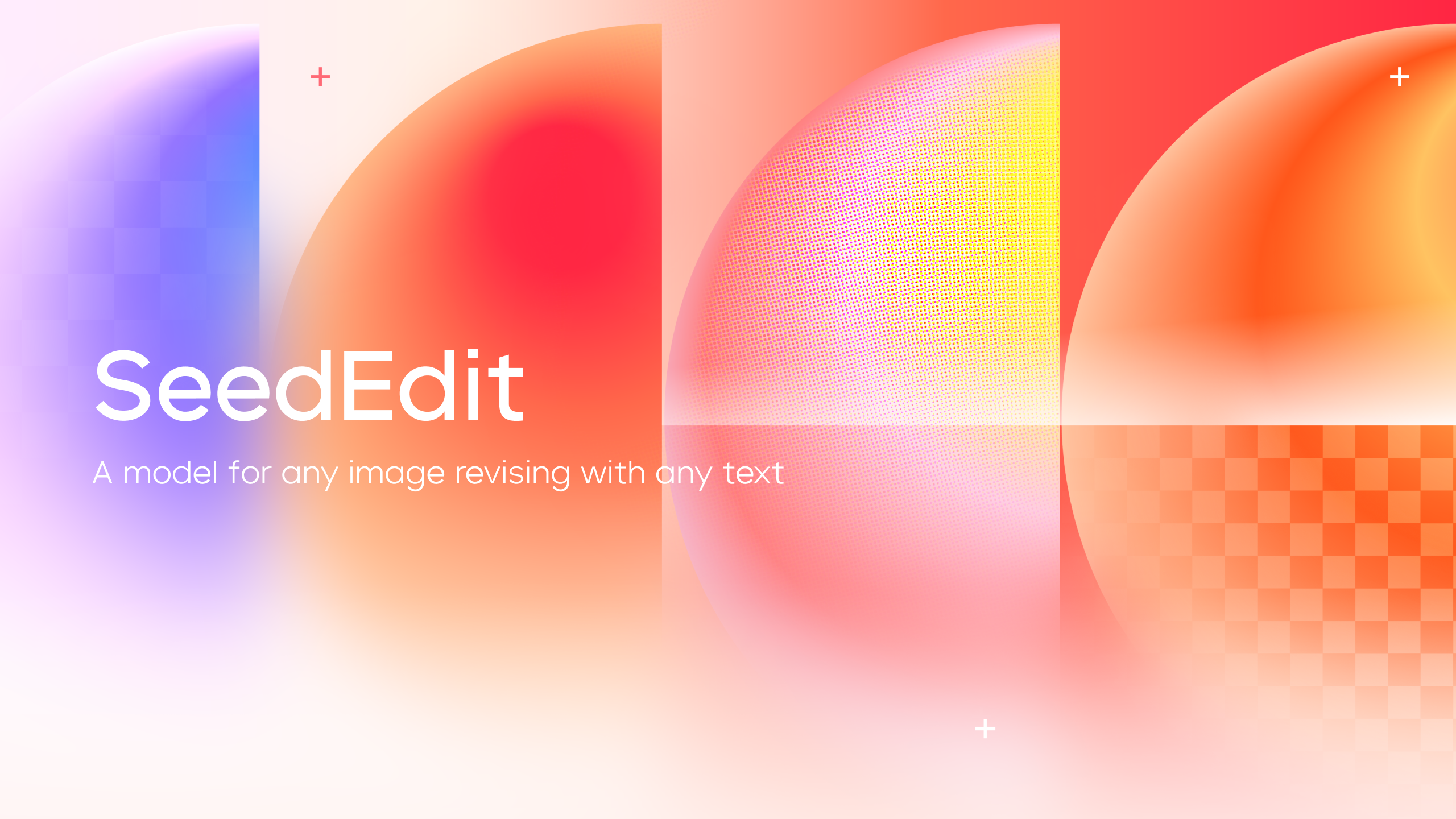SeedEdit
by ByteDance's Doubao TeamSeedEdit is a general-purpose image editing model that uses natural language instructions for tasks like retouching, style transfer, and element addition/removal.
What is SeedEdit?
SeedEdit is a general-purpose image editing model developed by ByteDance's Doubao team. It allows users to edit images based on simple natural language instructions, including retouching, style transfer, beautification, and adding or removing elements in specific areas. SeedEdit excels in finding the optimal balance between maintaining the original image and generating new images, ensuring precise and high-quality editing results.
Key Features of SeedEdit
- Text-Driven Image Editing: Users can guide SeedEdit to edit images based on simple text prompts, such as changing backgrounds, altering styles, or replacing specific elements.
- Diverse Editing Capabilities: Supports various types of image editing, including local replacement, geometric transformation, re-lighting, and style changes.
- Zero-Shot Learning: SeedEdit can perform stable image editing based on text prompts without additional samples.
- Multi-Round Editing Support: Allows users to perform continuous creative edits on the same image, enabling complex editing workflows.
- High-Quality Image Output: Maintains high resolution and aesthetic quality during the editing process, ensuring that the edited images look natural and artistic.
- Versatility and Controllability: SeedEdit achieves new breakthroughs in the versatility and controllability of image editing, accurately responding to ambiguous editing instructions.
Technical Principles of SeedEdit
- Balancing Reconstruction and Regeneration: The core of SeedEdit is to find the optimal balance between maintaining the original image (image reconstruction) and generating a new image (image regeneration).
- Text-to-Image Model (T2I): Treats the T2I model as a weak editing model, achieving editing by generating new images and gradually aligning it into a strong editing model.
- Data Generation and Filtering Strategy: Proposes effective editing data generation and filtering strategies to gradually align the T2I model into a strong image editor.
- Causal Diffusion Model: Introduces a causal diffusion model for image-to-image generation, with two branches sharing parameters applied to input and output images/text.
- Iterative Alignment: Based on iterative data sampling and model optimization, gradually aligns the model to improve editing accuracy and image consistency.
- Precise Editing Instruction Interpretation: Designs a new editing architecture to precisely interpret editing instructions and generate images, enhancing the controllability and precision of editing.
Application Scenarios of SeedEdit
- Social Media Content Creation: Users can quickly edit personal photos or images for social media sharing, such as changing backgrounds or adjusting styles.
- Advertising and Marketing: Advertisers can rapidly adjust ad images to fit different marketing campaigns, such as changing product colors or scenes.
- E-commerce: E-commerce platforms can provide tools for sellers and buyers to edit product images, such as changing clothing colors or simulating different lighting effects.
- Artistic Creation: Artists and designers can realize creative ideas by performing style transfers or creating unique artworks.
- News Media: Journalists and editors can quickly adjust news images to better fit the content or layout of their reports.
Features & Capabilities
What You Can Do
Image Retouching
Style Transfer
Element Addition/removal
Beautification
Local Replacement
Geometric Transformation
Re-Lighting
Categories
Image Editing
AI Model
Natural Language Processing
Text-Driven Editing
Style Transfer
Zero-Shot Learning
Multi-Round Editing
High-Quality Output
Versatility
Controllability
Example Uses
- Social Media Content Creation
- Advertising and Marketing
- E-commerce
- Artistic Creation
- News Media
Getting Started
Screenshots & Images
Primary Screenshot

Additional Images





